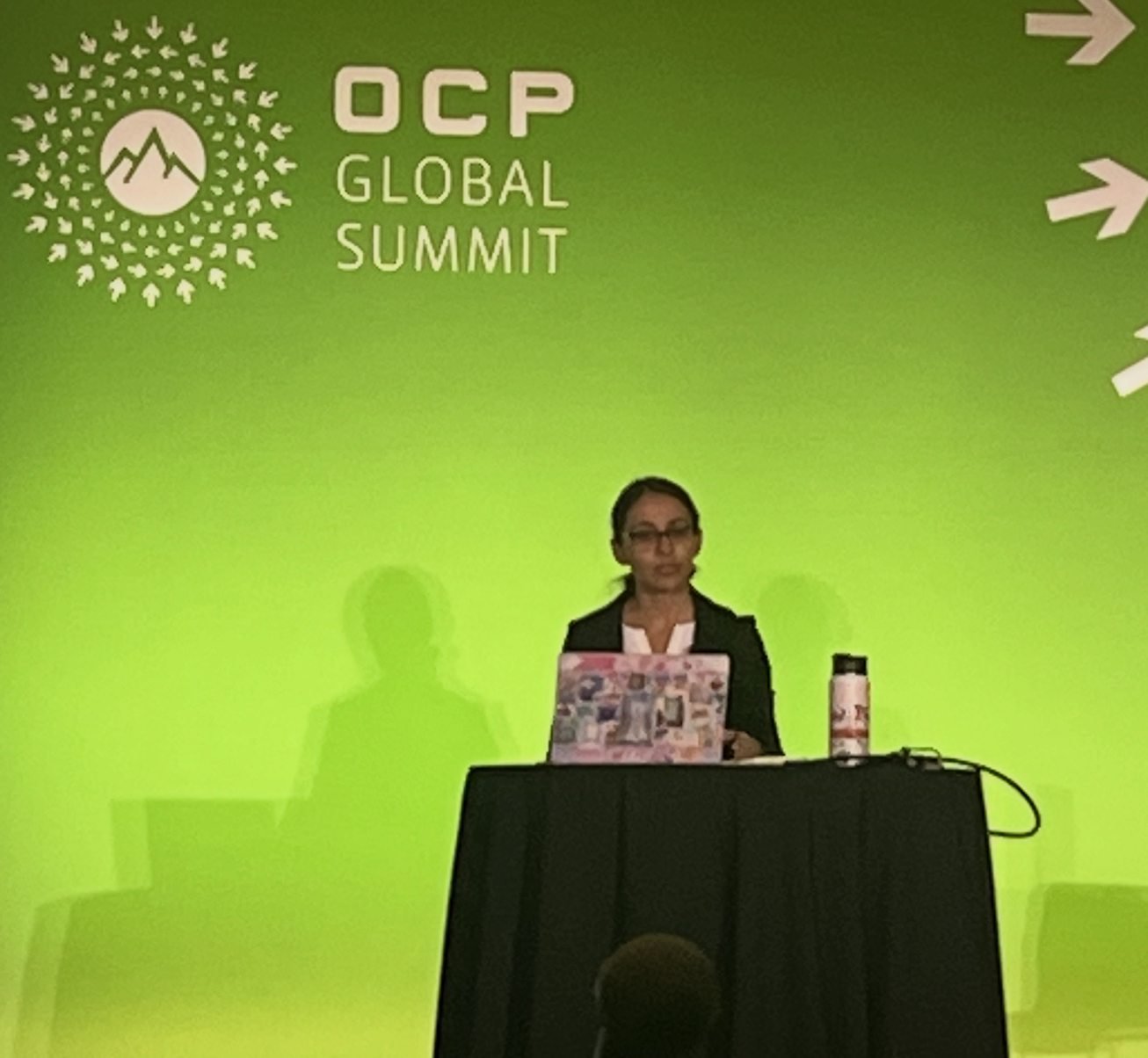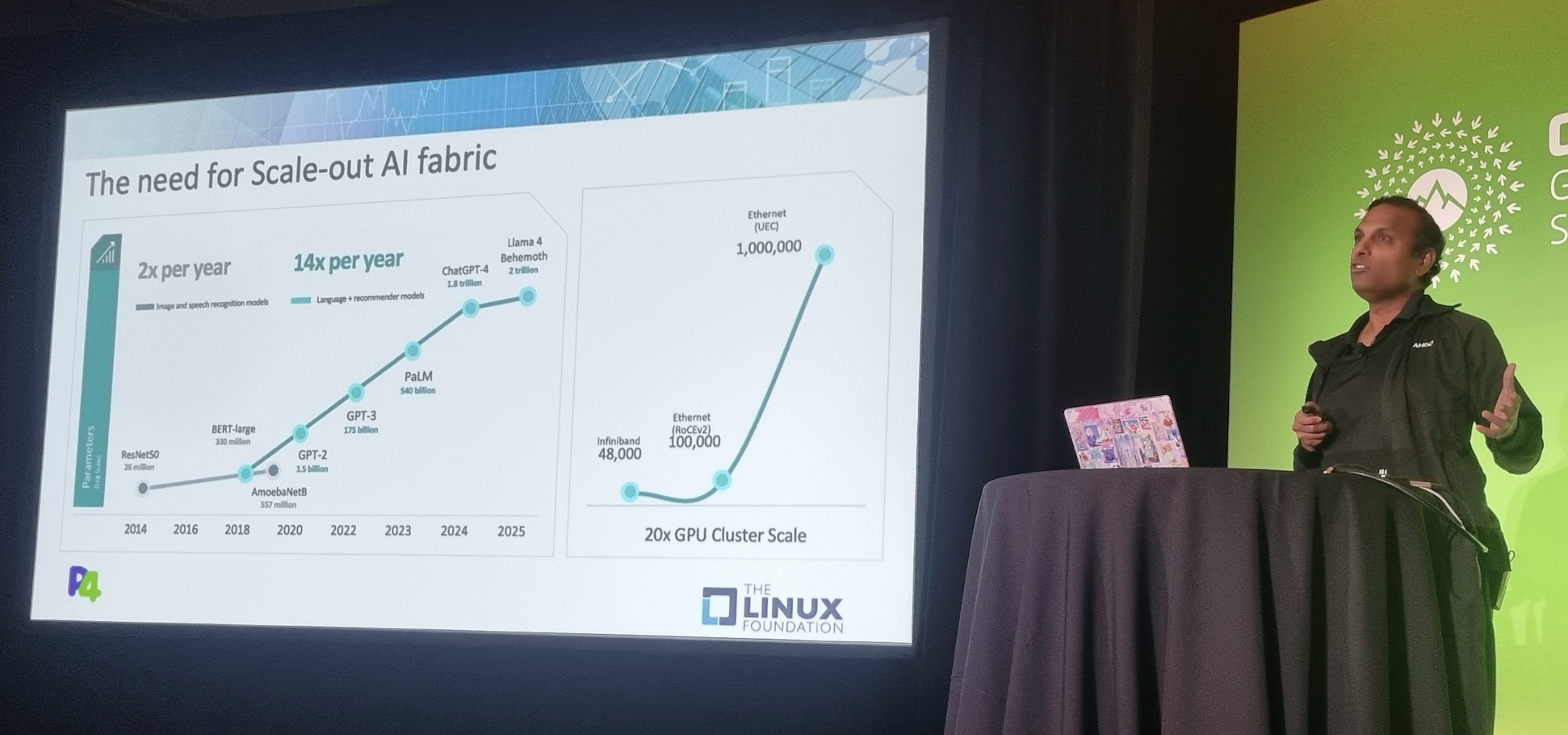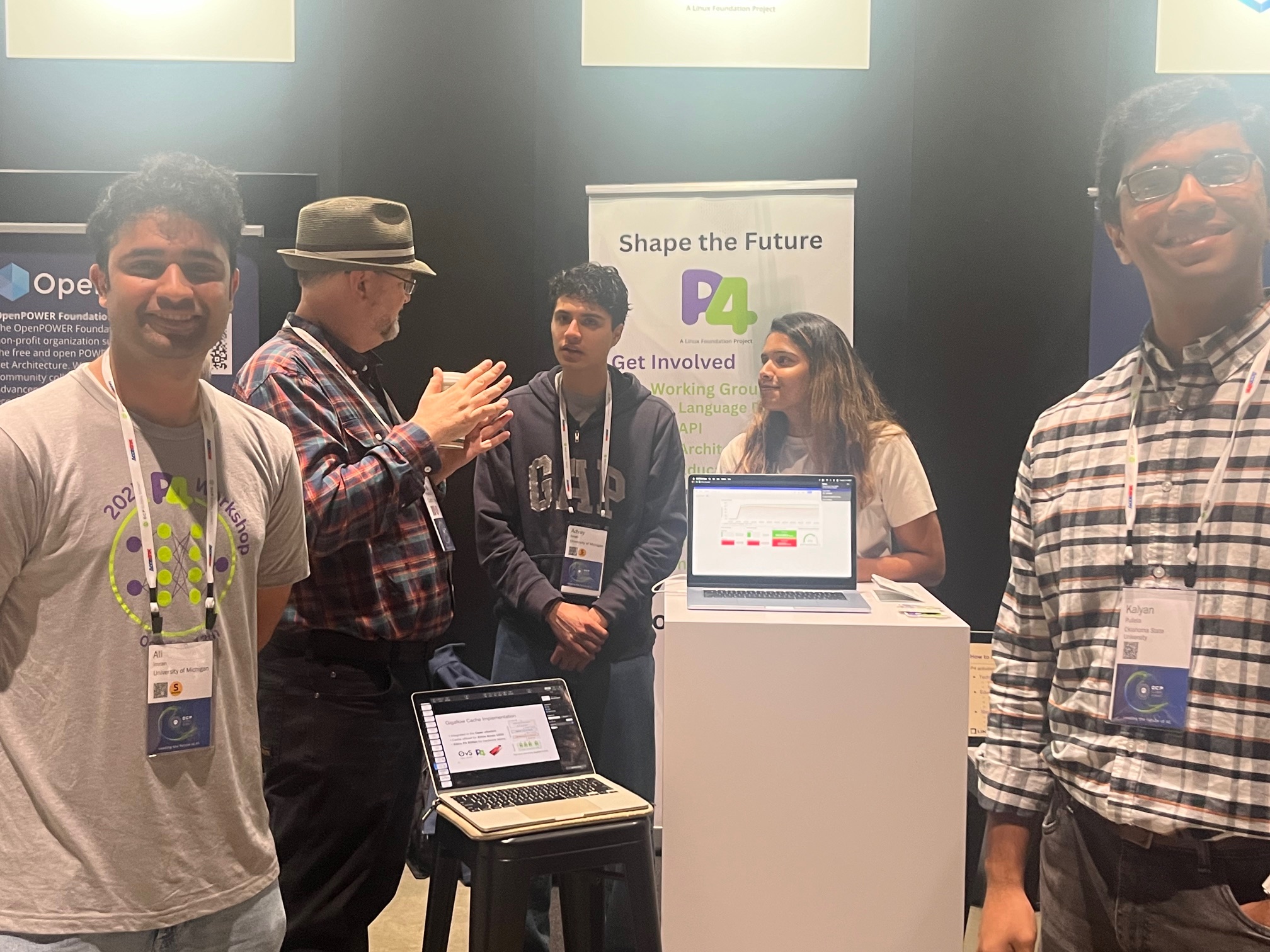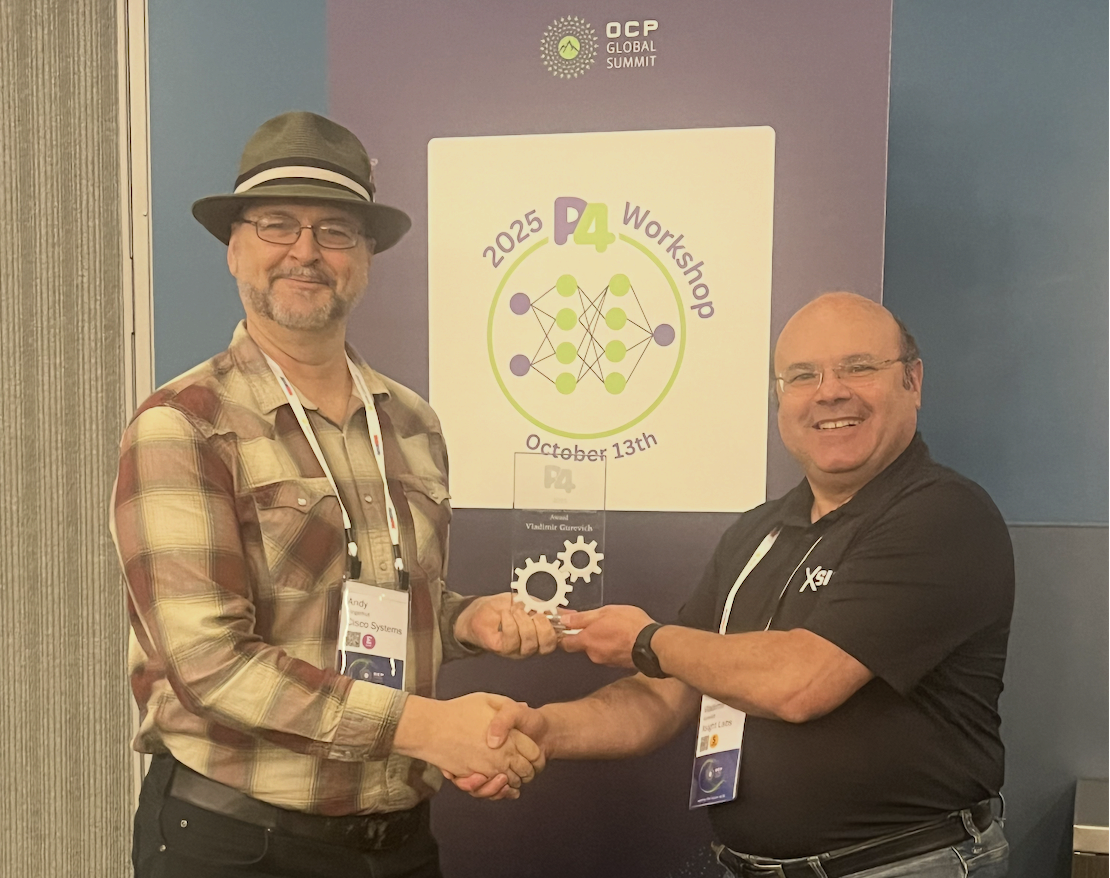Contributed by Fernando Ramos
The P4 Workshop 2025 brought together researchers, industry leaders, and developers from across the programmable-networking community to showcase the latest advances in P4 and its expanding role in modern systems. Chaired by Fernando Ramos (IST, University of Lisbon), with support from Andy Fingerhut (Cisco), Denise Barton (StratiView), Michelle Roth (Linux Foundation), and a distinguished Program Committee, the workshop highlighted how P4 is progressing beyond packet processing into broader systems domains. The event was hosted in conjunction with OCP Global Summit and included two keynotes and five live talks.
 In the first keynote, “High-Level and Target-Agnostic Transport Programs,” Mina Tahmasbi Arashloo (University of Waterloo) argued that while packet-processing languages have matured for L2/L3 tasks, the transport layer still lacks domain-specific abstractions. She proposed a new programming model that treats flows and events with target-agnostic primitives, enabling compiler-driven generation of efficient implementations across heterogeneous hardware — noting that P4’s design principles can inspire the next generation of transport-layer DSLs.
In the first keynote, “High-Level and Target-Agnostic Transport Programs,” Mina Tahmasbi Arashloo (University of Waterloo) argued that while packet-processing languages have matured for L2/L3 tasks, the transport layer still lacks domain-specific abstractions. She proposed a new programming model that treats flows and events with target-agnostic primitives, enabling compiler-driven generation of efficient implementations across heterogeneous hardware — noting that P4’s design principles can inspire the next generation of transport-layer DSLs.
 In the second keynote, “Using P4 NICs for Resilient Scale-out GPU Interconnect,” Krishna Doddapaneni (AMD Pensando) examined the increasingly demanding connectivity needs of large-scale AI systems. He showed how P4-programmable NICs with multi-plane architectures and advanced fault-handling mechanisms can support resilient, high-performance GPU-interconnect fabrics, transforming failure-prone, large-scale AI networks into robust and manageable systems.
In the second keynote, “Using P4 NICs for Resilient Scale-out GPU Interconnect,” Krishna Doddapaneni (AMD Pensando) examined the increasingly demanding connectivity needs of large-scale AI systems. He showed how P4-programmable NICs with multi-plane architectures and advanced fault-handling mechanisms can support resilient, high-performance GPU-interconnect fabrics, transforming failure-prone, large-scale AI networks into robust and manageable systems.
The five invited talks covered a broad spectrum of developments: “DVaaS Detective: The Case of the Failing Tests” addressed debugging and reliability for P4-based services; “Cisco Silicon One: Unifying Network Forwarding with P4 Programmability” presented how commercial ASICs can be programmed end-to-end with P4; “Unifying P4 with eBPF and DPDK via XDP2” introduced methods to harmonise heterogeneous dataplane ecosystems; “New Dawn of P4” reflected on P4’s emerging role in new systems domains; and “XASM: A Foundation to Program the X2 with P4” described a new programming foundation for next-generation XSight architectures.
 The workshop also featured a live demonstration at the P4 booth — “Gigaflow: Pipeline-Aware Caching in Virtual Switches with P4” by the University of Michigan, which showcased practical innovations in virtual switch performance.
The workshop also featured a live demonstration at the P4 booth — “Gigaflow: Pipeline-Aware Caching in Virtual Switches with P4” by the University of Michigan, which showcased practical innovations in virtual switch performance.
In addition, eight pre-recorded technical talks were released as part of the P4 Workshop and the videos and slides are now available online for the broader community.
 The programme included the 2025 Distinguished Contributor Award, presented to Vladimir Gurevich for his outstanding service to the P4 community.
The programme included the 2025 Distinguished Contributor Award, presented to Vladimir Gurevich for his outstanding service to the P4 community.
This year’s discussions revealed a clear overarching trend: P4 is moving upward in the stack, becoming an essential enabler for AI-centric, high-performance infrastructures and tighter hardware-software convergence across NICs, GPUs, and switches. The talks and demo highlighted P4’s growing role as a unifying abstraction layer connecting ecosystems such as eBPF, DPDK, and emerging toolchains — illustrating the vibrant collaboration space spanning academia, startups, and industry deployments.
Please check out the 2025 P4 Workshop web page to view all the exciting talks now on-demand.
